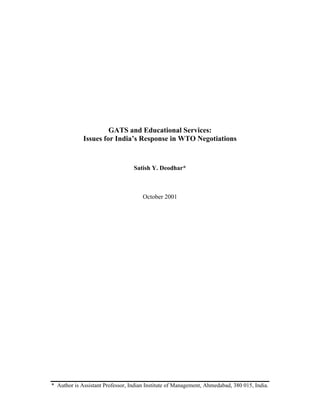This document discusses India's response to negotiations on trade in educational services under the General Agreement on Trade in Services (GATS) within the World Trade Organization (WTO). It outlines that trade in educational services is an important issue for India that requires thorough analysis before commitments are made. The document analyzes how GATS applies to the educational sector and discusses India's competitiveness in educational services trade and options for negotiations and domestic reforms.










